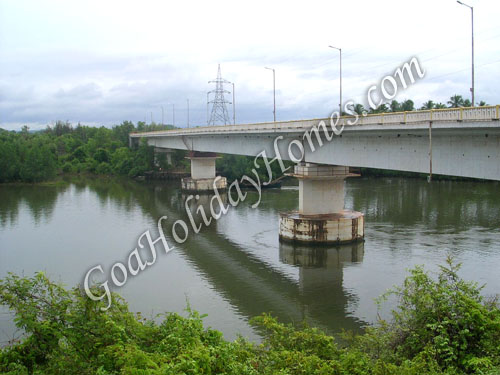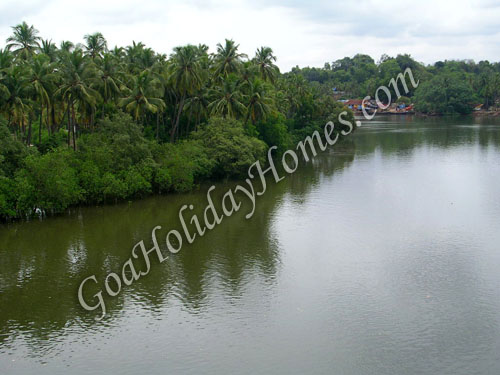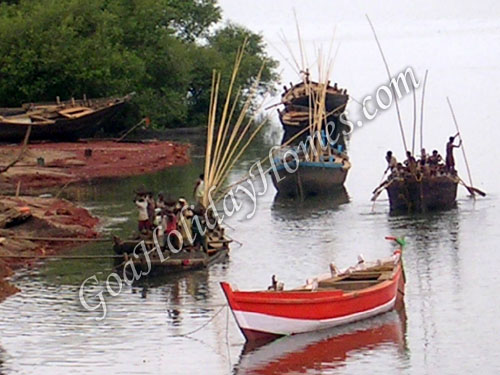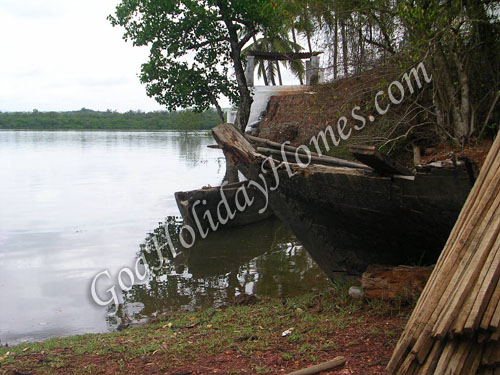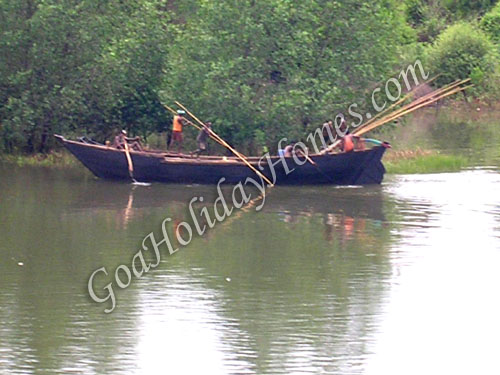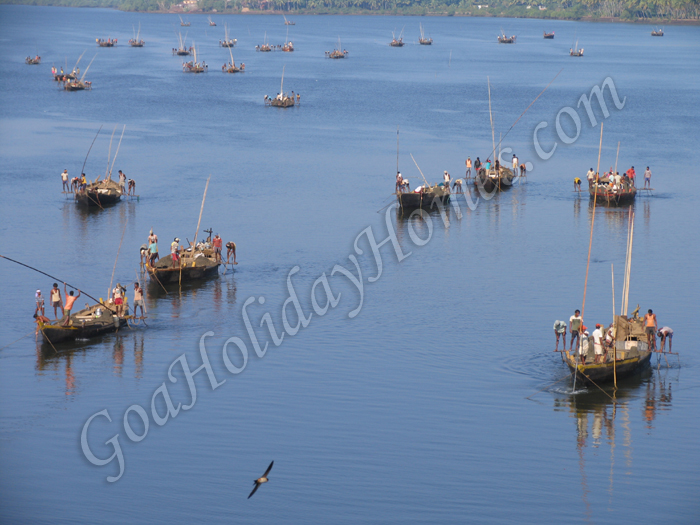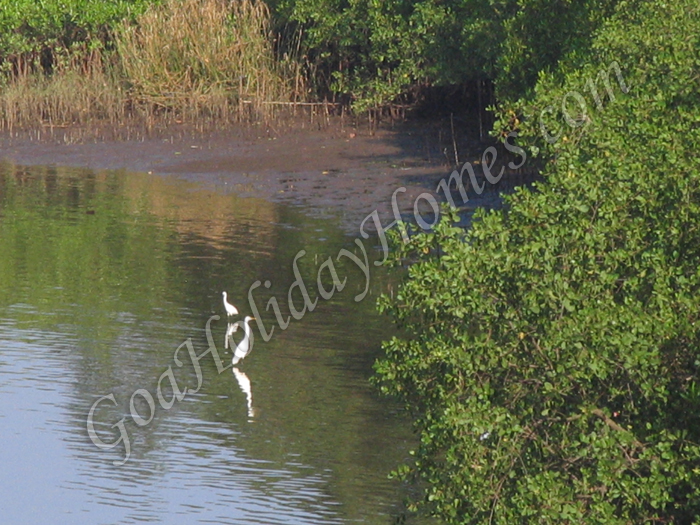Colvale
Colvale is a village ornamented by the lush green paddy fields and the riverine charm of the Chapora river over which is a rustic steel bridge which is a major factor for boosting trade and commerce from this village to other parts of Goa as well as reducing transport problems in a large way.
The river flowing from Colvale extends its tributaries to the neighbouring villages of Dhargalim and Pirna. The magnificent view of coconut palms lining the roadside and the wide parallel stretch of the Chapora spanned by the Colvale bridge is indeed a treat to watch.
Colvale is believed to have landmarks of King Porus’ reign who defeated Alexander the Great although no such inscriptions or remnants have been found. Colvale is famous for the abundant availability of ‘Murdoshi’ (lady fish) and Cashew feni. It was an important place of trade and commerce which flourished during the rule of the Portuguese, Marathas and the Dutch who would trade for many commercial items at this village which was a very strategic point.
Colvale is separated from its immediate neighbour Arabo by the Chapora while the Forto Novo fortress divides it from Tivim in the east. Sand is extracted in this village even though it is not a beach, which is often mistaken for Colva beach just because of the similar pronunciation. Colvale was a very important place for defence for the Portuguese against rival attacks due to its strategic position although the Marathas did succeed in capturing the Colvale fort.
Colvale has a very distinctive and magnificent church of its own and caters to the spiritual needs of the people of the neighbouring villages of Revora, Nadora and Camurlim although they have their own parishes now. This church was built in 1591 by the Franciscans in revolt against the attacks of the Marathas with donations from the respective Comunidades of Colvale and Camurlim and was dedicated to St. Francis of Assisi. It still is a masterpiece in terms of its grandeur and mystical architecture. Fishing and farming are the main occupations of the locals although quite a few have moved to foreign lands in search of greener pastures.
Colvale sadly, has undergone many trials and tribulations on account of the constant wars between the Marathas, Ranes and the Portuguese but has restored its sanctity ever since Goa’s liberation. There were several Hindu temples here although now only the Rama temple is the only distinct temple that is found in Colvale and is very much famous all over Goa.
Colvale is also believed to have Buddhist origins justified by the presence of a 2nd century Buddha statue at one of the local vaddos. Although there were many Hindu temples, they were destroyed during frequent raids leaving only 2 major temples, The Rama Temple and the Datta Temple.
The main occupation although traditionally being stone cutting and sand extraction, extraction of cashew feni and production of urrak has dominated the scenario so also rice cultivation in a major way. Colvale has had its share of past and present luminaries in every field of excellence and till date the village prestige has remained intact.
Contact Details
Get Directions:

